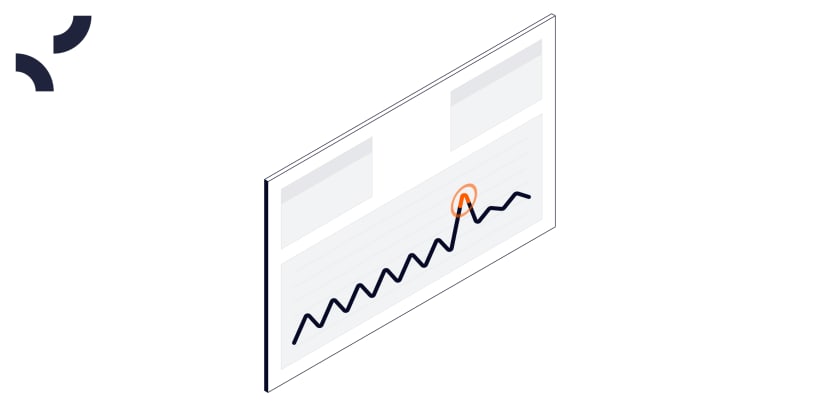
How to harmonize temperature compliance to minimize risks
Jakob Konradsen

What is the problem with siloed temperature compliance?
Historically, these areas have been handled separately for well-founded reasons: Each field has required unique expertise, which has made it tricky or even impossible to consolidate them.
However, this strict distinction often comes with (unnecessary) challenges.
7 issues that disconnected temperature compliance often causes:
-
Bottlenecks: Differing focuses, goals, and a lack of communication lead to the different departments becoming bottlenecks for each other, and temperature compliance being seen as an obstacle to business decisions and growth.
-
Complexity of processes: Designing efficient quality procedures becomes extra complex because of the many stakeholders to consider.
-
Inconsistency: All the parties involved make it difficult to ensure a cohesive approach to temperature compliance across the business.
-
Idle time: Since calibration is managed as a separate process, alignment issues often lead to costly periods of inactivity during mappings.
-
Daily disruptions: Interruptions occur between the various functions – often because of misalignment. For example, calibration disrupting activities in the lab or unit.
-
Frustration with “irrelevant” tasks: Although lab personnel takes compliance obligations seriously, for many, the tasks are not within their professional interest.
-
Unnecessary costs: When it comes to paying the bill for data loggers, calibrations, alarm systems, and other services needed, each department is responsible for its own piece of the pie. This often results in an unnecessarily high, and untransparent, price tag.
In other words, not having a unified temperature compliance strategy means a multitude of differing objectives that result in idle time, miscommunication, unnecessary manual work, frustrations, and much more.
Like putting together a puzzle, where each piece plays a vital role, but they don’t always fit.
How do you unify temperature compliance?
No doubt the interconnectedness of the fields offers a potential for improving efficiency and compliance through consolidating.
But combining all functions into one would not work for most organizations. Next to temperature compliance work, each department has a range of other responsibilities that don’t intertwine.
Instead, it is about seeing validation, data logger calibration, and temperature monitoring as integral parts of one comprehensive temperature compliance strategy.
How to do it?
The very, very quick version:
- Align with all relevant stakeholders to create a shared understanding of the need for alignment.
- Identify overlapping areas in workflows to reduce bottlenecks and redundancies and establish shared goals.
- Promote and make room for collaboration across departments.
- Assess digital solutions for their potential to support a unified temperature compliance effort – more on this below.
This will make it simpler to develop an effective, time-saving, and risk-reducing process across the field.
Easier said than done, we know. But even small efforts can make a difference.
If you want to dive deeper, the 5. strategy in our guide to spending less time on manual compliance work is about just that: 7 steps to aligning temperature compliance.

6 ways to spend less time on manual temperature compliance
Get your guideThe shortcut: Can an all-in-one temperature compliance solution fix it all for you?
Well… No.
But, even though there is no way around the need for a bit of internal alignment, there are shortcuts to unifying your efforts.
One of the most effective ones is introducing a temperature compliance solution that combines them: Merges both temperature monitoring, mapping, and calibration into one and allows digitalizing – and therefore easy exchange – of data across teams and locations.
Estimated reading time: 6 minutes
Performing mappings, monitoring temperatures, handling deviations, reporting for audits, calibrating data loggers: Considering them all parts of ONE compliance process is the direct route to reducing the cumbersome nature of traditional temperature compliance in pharma and biotech – here’s why.
Are you looking at temperature monitoring, thermal mapping, and data logger calibration as separate areas?
Then you’re probably missing out.
Unifying efforts into one cohesive temperature compliance process, will not only improve efficiency and reduce collaboration challenges but also allow you to automate traditionally cumbersome and manual domains.
Let us dive into how and why.
In this article, we go through:
- What does temperature compliance entail?
- How does (disconnected) temperature compliance traditionally work?
- What is the problem with siloed temperature compliance?
- 7 issues disconnected processes often causes
- How do you unify temperature compliance?
- The shortcut: Can a connected solution fix it all for you?

Have questions?
Learn how to streamline your operations with a free, personalized consultation and discover how automated temperature compliance can simplify your company operations.
What does temperature compliance entail?
In the world of pharma and biotech, there are many different regulatory fields – and even if you work with quality, you might not have come across “temperature compliance” as a term very often.
Nevertheless, the concept holds the potential to considerably optimize the way we work with temperature-related compliance issues within both GMP and GDP.
The short version: Temperature compliance consolidates the quality tasks intended to ensure that temperature-sensitive products are handled within specific temperature ranges during storage and transport.
The field compiles three primary domains:
- Temperature monitoring
- Validation and temperature mapping
- Calibration of temperature data loggers
In most organizations, these domains are handled somewhat independently and by separate departments operating independently with their own budgets focusing on their own tasks, objectives, and priorities.
But there is a more efficient way.
Also read: 5 things to look for in an all-in-one temperature compliance solution (and how they work)

6 ways to spend less time on manual temperature compliance
There are ways to make temperature compliance much simpler and less time-consuming.
This guide outlines how.
How does (disconnected) temperature compliance traditionally work?
Here is a breakdown of how the division of temperature compliance fields can* look in a typical pharma organization with a typical setup:
-
Temperature monitoring: Temperature monitoring in labs and storage facilities commonly involves both the “owners” of the facility or unit – often quality control (QC) or Quality Assurance (QA) experts or the lab technicians – and the facility management department (FM) running a Facility Management System (FMS). The unit owner has the “quality-related responsibility” and, as a result, has installed validated and calibrated data loggers to ensure quality standards. This data is archived for audits. FM handles the technical aspects of monitoring, ensuring that deviation alerts are triggered and the system works. For this, they will typically use sensors that, while not calibrated (due to higher costs) or FDA 21 CFR Part 11-compliant, can detect system malfunctions. If issues arise, the FM first attempts to resolve them. If unresolved, QC/lab staff then consult the calibrated data to check for any quality discrepancies.
-
Temperature mapping: Temperature mapping is typically handled by a cross-functional team of quality assurance (QA), FM personnel, and sometimes, specialized external consultants. The QA team plans, designs, and reviews temperature mapping protocols to ensure compliance with regulatory requirements, and FM is responsible for executing the mapping study, including the placement of data loggers in the designated areas according to the protocol. External consultants are sometimes engaged to provide guidance, especially in the case of complex mapping studies.
-
Data logger calibration: Data logger calibration plays a crucial role in making sure that the instruments are accurate and deliver reliable readings. The methodology requires a different skillset than other temperature compliance fields and is therefore normally a separate operation handled by a calibration laboratory in-house or external technicians and labs. The labs will most often be ISO17025 accredited by the national accreditation body such as A2LA, DAKKS, UKAS, etc.
*We have come across thousands of different structures, and this account consists of a simplified description of the commonalities between many of these.
Psst… Strategy #5 in our guide to spending less time on manual temperature compliance is about the 7 steps to unifying temperature compliance. Find it here.
These fieldsare usually treated as separate areas, but, in reality, they are highly entwined.
4 examples of how the fields affect each other
1. Calibration and temperature mapping
During a mapping, data loggers will be shipped for calibration before the start of the study, sometimes during, and again after it is finalized. This requires time, has to be coordinated with the external or internal calibration specialists, and often results in idle time and delay of the mapping.
2. Monitoring and calibration
Unit owners (lab managers/QC) and FM are affected by the work of calibration technicians impacting operations on a continuous basis throughout the year due to a lack of spare data loggers that makes it unfeasible to conduct all calibrations in one go.
3. Calibration and QA
To replace data loggers for calibration, QA has to perform risk assessments, which include paperwork, coordination, and time.
4. Temperature monitoring and mapping
Temperature mapping paves the way for efficient monitoring since the findings from the study can (and should) be used to define where monitoring data loggers should be located as well as the necessary amount. Often findings from a temperature mapping study will also define operational restraints and optimizations for operational teams.
And so on and so forth.


5 things to look for in a connected temperature compliance solution
If you want to learn more, we dive into the details of these solutions in the article: “5 things to look for in a connected temperature compliance solution (and how they work)”.

